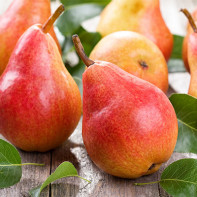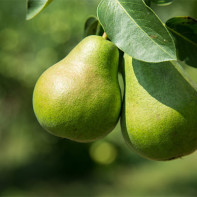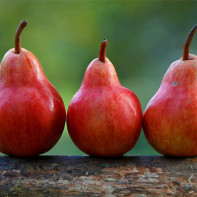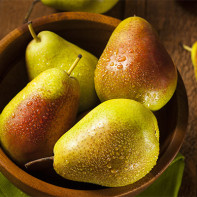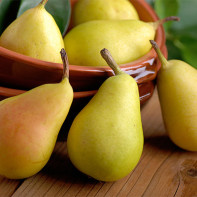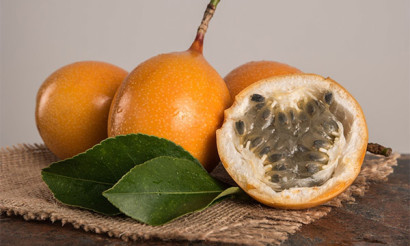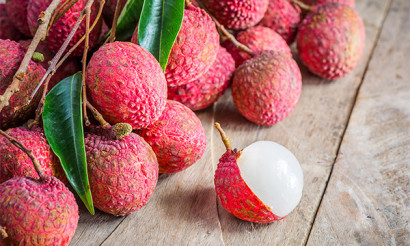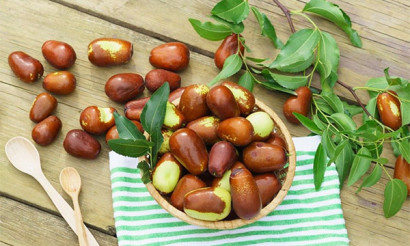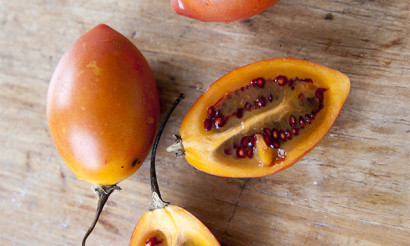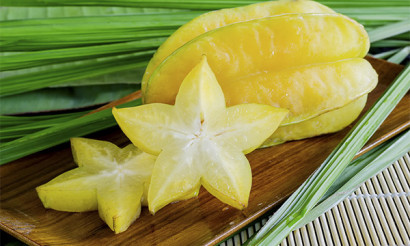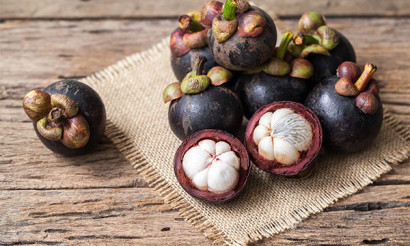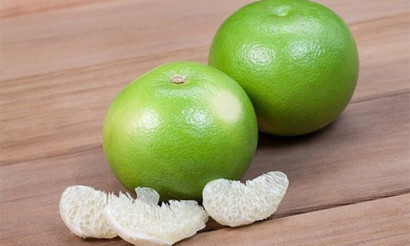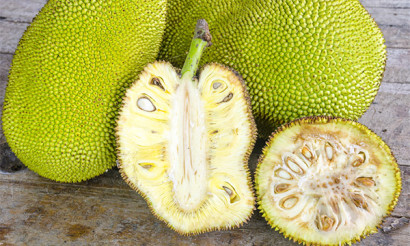Pear: useful properties and contraindications
Tender, juicy and sweet pear is actively used in cooking, it is an exquisite and enjoyable meal for every day. The fruit is very useful and has been actively used in medicine since its discovery. For its great taste even Homer in his great work "The Odyssey" called the pear a gift of the gods. The fruit originally came from Asia, but it was already known in the earliest civilizations of the interfluves, and by the time of ancient Greece it was cultivated in Europe. The pear can be consumed fresh, canned, made into juice, boiled into compotes, baked, or otherwise heat treated.
- Which is healthier: a pear or an apple
- Composition and calories
- What are the benefits of a pear
- General Benefits
- For Women
- For Men
- In Pregnancy
- For breastfeeding
- For children
- Weight loss
- The benefits of dried and dried pears
- How to Dry
- Pear Leaf Benefits
- Is pear juice useful?
- How to make
- Pear in medicine
- Diabetes Mellitus
- In pancreatitis
- For Gastritis
- For bowel
- For constipation
- For gout
- For colitis
- For the liver
- For hemorrhoids
- For cholecystitis
- Pear in cosmetology
- For Face
- For hair
- Harm and Contraindications
- Can pear be allergic?
- How to choose and store the pear
- Can I freeze them?
- What can be made of pears: Recipes
- Jam
- Compote
- Wine
- Cider
- Jelly
- Salad
- Smoothie
- Pear puree for winter
- Pear tarte tatin
- Confit
- How to bake
- How to Eat a Pear
- How much can I eat per day?
- Can I Eat a Pear at Night and on an empty stomach?
- Can I Give Pets Pears
- Interesting Facts about Pears
Which is healthier: a pear or an apple?
These are two similar fruits that are often used in the same recipes. However, it is simply impossible to choose a single leader. It is ideal to use both apples and pears in the diet, especially from a taste point of view, they complement each other perfectly.
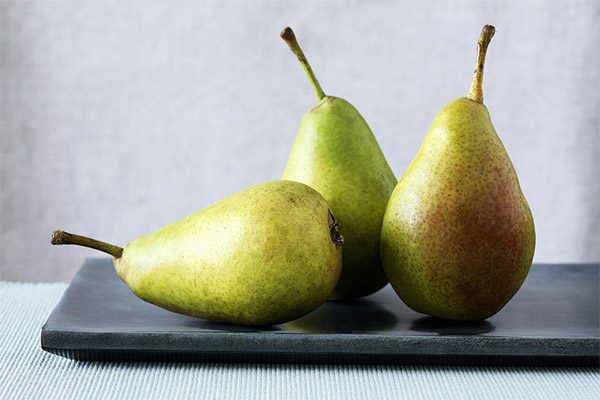
An average apple (the distribution of vitamins and minerals seriously depends on the variety) has slightly more vitamins, especially A, E, B5 and B6. If you look at calories, the difference is minimal - 52 versus 57 for a pear per 100 grams. However, a ripe apple has more dietary fiber than a similar pear. Also keep in mind that the healthiest sour varieties can provoke an appetite when eaten raw.
The pear has a rich mineral composition, namely iron, calcium, potassium, copper, zinc. And the advantage is very significant. Among vitamins, K has a significant advantage - more than 100% of the apple, and B3. If you look at the rest of the composition, with the equality of harmful fats, the pear has a significant amount of mono- and polyunsaturated fatty acids, which are extremely useful.
The apple certainly has more vitamins and healthy dietary fiber behind it. The pear, on the other hand, has a mass of micro- and macronutrients, is a weighty supplier of vitamin K, as well as poly- and monounsaturated fatty acids.
Composition and calories
It should be understood that there is no one-size-fits-all composition for pears. The availability of vitamins and minerals is influenced by the place of growth, the saturation of the soil, the particular variety. The average 100 grams of a pear contains:
- Calories - 57 kcal;
- carbohydrates - 15.22 g;
- fats - 0.14 g;
- proteins - 0.36 g;
- ash - 0.32 g;
- water - 83.86 g.
The content of about 9 g of fruit sugars and 3 g of fiber should be singled out. Among the vitamins, micro- and macronutrients present:
- Vitamin K - 4.4 mcg or 3.9% of the daily requirement;
- Vitamin B3 - 0.2 mg;
- Vitamin C - 4.3 mg;
- Vitamin E - 0.1 mg;
- calcium - 9 mg;
- Potassium - 116 mg or 3% of the daily requirement;
- Copper - 0.1 mg or 9% of the daily requirement;
- manganese - 0.2 mg;
- magnesium - 7 mg;
- iron - 0.2 mg;
- phosphorus - 12 mg;
- Zinc - 0.1 mg.
How is a pear useful?
General benefits
Pear is also actively used in diets. This low-calorie and at the same time very tasty, general tonic product. The presence of numerous elements, poly- and monounsaturated fatty acids and vitamin K makes the pear a universal means of replenishing the body's needs.
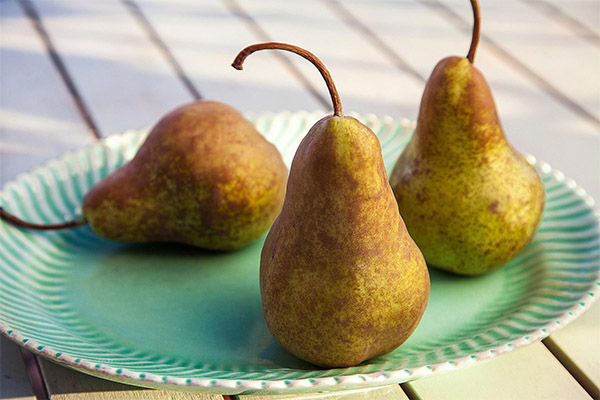
A special substance - arbutin - has a mild antibacterial effect, so pear is good to include in diets for various diseases of a bacterial nature.
A good combination of substances and sugars gets rid of heartburn. Nutritionists recommend eating pears in the morning for liver diseases and gastritis.
Potassium in combination with vitamins has a beneficial effect on the cardiovascular system. Also noted the positive role in the normalization of the gastrointestinal tract, the elimination of stagnant processes in the intestines and the restoration of normal stools.
For women
The pear is an extremely easy to digest nutritious fruit. He is ideal to fit into any diet, prevents the risk of failure, perfectly quenches the desire to eat something sweet and unhealthy. Special substances - quercetins - are excellent antioxidants, but for this purpose it is necessary to eat a pear with peel, which contains 82% of this substance.
The fruit is hypoallergenic, a woman can safely use it even during pregnancy and lactation.
For men
In ancient China, the pear was considered a symbol of longevity. And this is not without reason. The large amount of potassium and minerals perfectly supports the cardiovascular system, especially vulnerable in men.
Essential oils and dietary fibers help to get rid of the consequences of last night's feast. They stimulate digestive processes, prevent stagnation. Nutritionists recommend consuming 1 pear in the morning after the feast.
For men who want to maintain their figure, they recommend arranging pear days once every two weeks. On such a day, only pears and products with a dominant content of this fruit should be consumed.
When pregnant
Pears are indicated for use during pregnancy, but not on an empty stomach. In this case the manifestations of toxicity are reduced, there is a decrease in complaints of constipation and upset stomach.
Vitamin complexes are beneficial for blood quality, especially vitamins B3 and B9. This is especially important for the body of a pregnant woman. The fetus is completely hypoallergenic and poses no threat to the fetus.
When breastfeeding.
A nursing mother is recommended to consume 1 to 3 fruits daily, with daily windows for a week. Pear fits perfectly into the diet, it provides the body and milk with the necessary minerals.
It is significant the impact of the general strengthening factor and normalization of digestion, which increases the quality of life and reduces the various risks to lactation. However, studies have not confirmed an increase in milk yield on the background of pear diets.
For babies.
The pear is a desirable fruit for any baby. It can be given as early as 8 months, initially in the form of puree and no more than 20-30 g. After one year of age, you can prepare baked pears by the piece.
Potassium, B vitamins strengthen the child's cardiovascular system and eliminate the risk of childhood anemia. It is also recommended to give pears in the form of mashed potatoes, warm juice or compote as a supportive therapy for acute respiratory infections.
For weight loss.
This is an indispensable product for those wishing to lose weight. The pear fits well into any diet, while the product is low in calories and extremely useful in a general sense for the body.
There are also special applications for cleaning the body. For example, introduce a special pear days once or twice a week, when consumed only pears in various forms. On other days, consumption of the fruit at night will load the GI tract with work and prevent the accumulation of fat. A pear for breakfast stimulates digestion for the day, ensuring better digestion of all subsequent foods.
Benefits of dried and dried pears
Fresh fruits are seasonal, they don't store well and require canning or drying. Drying and curing practically does not change the original composition. Only a few B vitamins are lost. But such a product can be used all year round, soaked in drinks, boiled compotes or added to other dishes.
By increasing the total concentration per 100 grams of dried and dried pears has a more pronounced diuretic, expectorant and antipyretic effect. Also such fruits, although they stimulate the digestive system, but slightly increase the acidity of the juice and have a slight fixative property. Therefore, they should be used with caution by people who suffer from constipation.
Decoctions of dried pears have long been used to combat excessive nervousness and insomnia. However, the specific mechanisms of action at this time has not yet been elucidated.
How to Dry
Drying pears is quite easy, as the peel does not need to be removed. You should choose ripe, but not overripe fruits, without much damage and pockets of decay. Small pears are allowed to be dried whole. However, the type of chopping is arbitrary. You can cut in half, into three pieces, slices or circles.
Drying takes place in an oven at 55-60 degrees. On a baking tray you should put slices or whole pears in one layer evenly. In terms of time it will take 12-18 hours. Higher temperature is allowed, but in the final stages. Otherwise, the juice will simply start to boil, the slices will lose their appearance, begin to crack.
The classic type of drying in the sun is possible. You need to put pears or slices on a lattice and place in a well-ventilated sunny place. In an apartment you can use a balcony. Drying continues for two sunny days and another two days in a well-ventilated, but already dark or shaded place.
The benefits of pear leaves
Often everything is centered around the fruit and the rest is undeservedly forgotten. However, pear leaves are extremely useful. They contain much more vitamins, including and C, have antiseptic substances, so previously recommended to drink tea from pear leaves for colds and sore throats.
Young leaves have a lot of fungicides, it is a great natural antifungal agent. It is what is added to many ointments. From such leaves you can make a mush and smear it on the affected areas of the body.
Is pear juice useful?
Even the great Roman physician Galen prescribed pear juice for fevers. It was drunk by the patricians at feasts. It is extremely pleasant to the taste, slightly refreshing and easy for the body to digest, so it is shown in various diseases of the stomach and intestines.
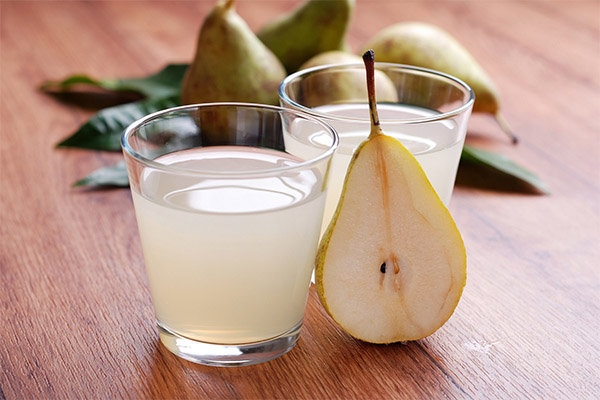
Pear juice supplies the body with vitamins, poly- and monounsaturated fatty acids, and minerals. Essential oils help fight infections and reduce the intensity of inflammation. The juice also stimulates the digestive system, getting rid of stagnant effects and alleviating toxicosis.
How to make
Getting the juice out of a pear is quite a challenge. Ideally, you'll need a juicer. It's easy there, just chop the fruit, put it in the machine and get fresh, flavorful juice. With 1 kg of pears comes out about 600 ml of liquid in a household squeeze. However, the fresh juice must be drunk immediately. If storage is required, you need to sterilize for 20 minutes, you can directly in the jar.
When there is no juicer, you can use a blender or meat grinder, but it will take more effort, and the juice yield will be lower. It is necessary to crush the fruit into a homogeneous puree. Then pour the puree into the gauze, folded 6-8 times, and, putting a sieve, squeeze out the juice. The best result gives the method of twisting, so you can achieve maximum effort. The juice yield usually ranges around 500 ml from 1 kg.
Pear in medicine
Modern medicine unambiguously recommends including the pear in the list of recommended foods. However, the fruit is regarded solely as useful in diets, but not therapeutic.
Folk medicine uses ground pear seeds to fight worms. Crushed leaves can be used to treat dermatitis and fungal diseases. A special compote relieved symptoms of prostatitis and urolithiasis. The baked fruit was used for tuberculosis.
For diabetes.
Pear is always included in the diet of patients with diabetes of any type. The product does not need insulin for digestion, so it is extremely easy for the body. At the same time, the fruit has a mass of useful substances and vitamins.
In the fight against overweight and edema is recommended to drink pear juice 70-100 ml half an hour before a meal. This stimulates the digestive system and gives a slight diuretic effect.
Important: The glycemic index of a pear is 38 units.
In pancreatitis.
It is allowed to introduce pears into the diet. This allows you to diversify your diet without burdening the pancreas, because fresh fruit is digested in just 40 minutes.
However, there are serious contraindications. Pears contain calcium carbonate, coutine and silica, at a certain course of the disease these elements can seriously complicate the condition. Therefore, pear is introduced into the diet for pancreatitis only under the supervision of a doctor.
With gastritis
The disease requires diagnosis. Pear has the property of increasing acidity and worsens the condition in a certain form of gastritis. If the doctor approves the inclusion in the diet (usually with a chronic or hypoacidic course of the disease), you should consume pears in baked form and without peel.
For the intestines.
Pears have a stimulating effect on the entire intestine. Juices and compotes have an astringent effect, they are somewhat stiff, and if taken systematically can cause constipation.
Fresh or baked pears have a slightly laxative effect. They also supply the body with the necessary dietary fiber, which leads to normalization of the stool.
In constipation
It is not recommended to consume juices and any form of pears without pulp. It is weak, but still a fixative, that is, it will only make the situation worse.
It is allowed to consume fresh or baked pears, but preferably a little and in combination with obviously laxative fruits or berries, such as prunes.
Modern studies show that the systematic use of pear pulp normalizes bowel function and gets rid of chronic constipation caused by stagnation and poor peristalsis.
With gout
Pears are included in the classic diet #6, which is prescribed for gout. It is a light and healthy product that diversifies the diet and has a general restorative effect. However, as modern medical research has shown, regular and systematic consumption of pears in different forms had no effect on the complaint map and overall quality of life of patients.
In colitis
It is forbidden to consume pears in their raw form. Rough fiber will irritate the intestinal walls and lead to a worsening of the condition. Doctor on the basis of objective diagnosis can include in the diet baked, boiled, stewed pears in small quantities. Juices and compotes do not contain fiber, so can be freely added to the diet.
For the liver.
Organic acids provide mild stimulation to the kidneys and liver. Therefore, pear can be included in diets for some liver diseases. It is also good for relieving the manifestations of last night's feast. However, for serious diseases, the decision on the form, amount and inclusion of pears in the diet should be made by the doctor.
When hemorrhoids.
It is not recommended to use juices and compotes, they will lead to thickening of the feces, and therefore - the hemorrhoidal nodes will be more traumatized.
Fresh or baked pulp is indicated for systematic use, it has dietary fiber and has a generally normalizing effect. However, nutritionists make special menus for hemorrhoids, where the fruit is adjacent to having a clearly laxative effect of fruits or berries.
In cholecystitis
Diagnosis is obligatory. In general, the stimulating effect of the pear is not great, but perhaps it is not enough for a sharp deterioration of the condition and immediate surgery. In chronic and moderate course pear is recommended in any form. It will help to get rid of heartburn and improve the overall condition.
Pear in cosmetology
Modern cosmetology makes extensive use of pear to saturate and visually refresh the skin. The special substances in the fruit give excellent results on adolescent problem skin. The leaves are used as a remedy to reduce inflammation and irritation of oily skin. Pear extracts of active substances are included in rejuvenating, nourishing creams and antifungal remedies.
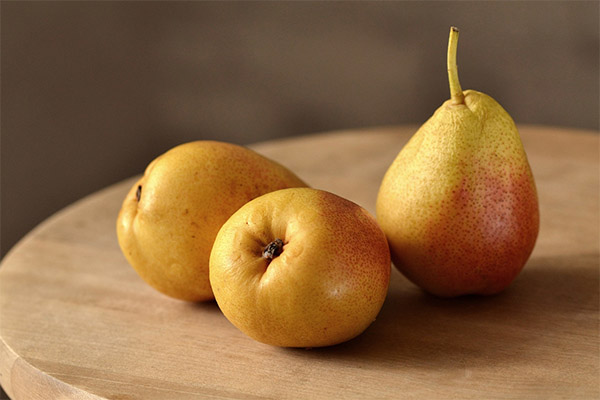
For the face
Mainly masks are used, and even single-component masks. The most basic for normal skin, which will nourish it, visually rejuvenate and accelerate the healing of pimples, consists of mashed pears without the skin. The mixture should be applied to a gauze napkin with eye slits and placed on the face for 20 minutes.
- A popular rejuvenating procedure today is carried out with the following composition: two tablespoons of mashed pears, a teaspoon of almond oil and some sour cream. Mix everything and apply it on your skin, not only on your face, but also on the décolleté or hands. Leave for 25 minutes, and then wash off with a decoction of chamomile, celandine and succession.
- An anti-inflammatory and restorative mask is prepared on the basis of a teaspoon of onion juice, three tablespoons of pear puree and a similar amount of milk. Add to the mixture a finely ground aspirin tablet and mix until smooth. Apply to problem areas of the skin, keep for 15 minutes, then wash off with warm water.
For hair
- Cosmetologists actively use masks based on pears to strengthen hair, getting rid of brittleness. Also, thanks to the saturation with vitamins and useful substances, there is volume, the hair becomes more lively. A whole pear should be dropped in boiling water for 30-40 seconds, then peeled from the skin and seeds and mashed into a puree. To prevent the mixture from flowing, you need to thicken it with a teaspoon of gelatin and then apply it to the hair from root to tip for 15 minutes.
- To prepare a revitalizing mask, mashed potato one pear, add an egg yolk and a tablespoon of honey. Mix everything and apply it to just washed hair. Time the mask works for 20 minutes, then rinse with warm water.
- Mask, strengthening the hair, is prepared on the basis of mashed pears without peel, one chicken egg, a tablespoon of burdock oil and lemon juice. Stir everything thoroughly and apply to the hair, and part of the mass should be rubbed into the scalp. After 20 minutes, wash the mask with warm water.
Harms and contraindications
Pears are not recommended to eat immediately after fatty or smoked food, they will seriously complicate digestion in this case. It is better to wait 2-3 hours, such stimulation will lead to good digestion of heavy food, the absence of stagnation.
Overripe fruits may accumulate acetic acid, but its concentration is small and insignificant for a healthy person.
Contraindications apply only to certain forms of consumption. So, with ulcers, gastritis and colitis can not eat raw fruit. With constipation it is not recommended to drink pear juice or compote.
Are there any allergies to pears?
The pear is in the group of hypoallergenic fruits. However, this does not mean that there are no risks. Sometimes cases of true allergies are registered. Therefore, it is necessary to take precautions and give a little pear puree at first, and then look at the child's condition.
How to choose and store pears
The most delicious, flavorful and useful are ripe pears. But the harvesting period is quite small and measured in a few weeks. Therefore, it is important to choose exactly a good and juicy pear.
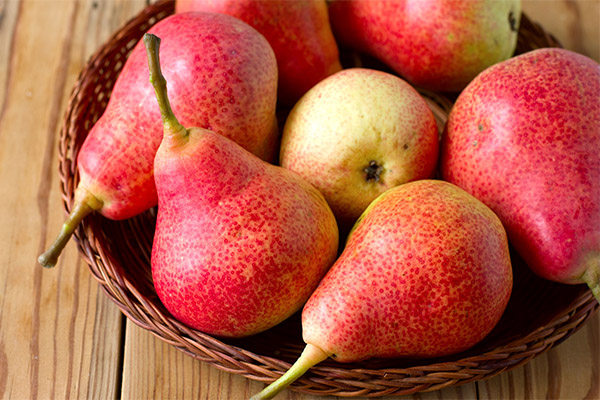
- Initially, you need to feel the fruit, it should not be hard or unnecessarily soft.
- Look closely at the texture: if the skin shows a noticeable graininess, this is an indicator of natural ripeness, i.e. the fruit is ripe on the tree.
- When brown spots start to appear at the tail, it means that this pear has already started to spoil.
- Unfortunately, you cannot be guided by the color; it depends on the variety, not the ripeness. It is advisable to ask for a piece to try or look at the cut. The fruit should be evenly dense, with no obvious soft spots. Sweetness is also an indicator, the riper the pear, the sweeter it is.
A ripe pear keeps very little, a few days. You can buy unripe fruits, they are not pineapples, they will ripen in a dark cool place, although they will be less flavorful than those that ripened on the tree. Unripe pears can take up to two months to ripen in the refrigerator.
The best way to preserve its great flavor, aroma, and health benefits for the winter is canning.
Can they be frozen?
The pear can be frozen in any shape - whole, sliced, stuffed with berries or syrup and sugar. It is enough to wash the fruit, wipe and dry with a towel, and then freeze in a convenient form. The only nuance - now it is recommended to use sealed containers or vacuum bags, so the smells of other products will not penetrate the pear. You can store such raw materials for up to a year.
The most important thing is to defrost correctly. There is even a rule "Freeze quickly, defrost slowly." You can not re-freeze the product, so it is better to make small portions at once. Put the billet on a plate, on the bottom shelf of the refrigerator. It should thaw slowly, a day and a half or two days. Then the shape and texture of the fruit will be preserved.
What can be made with pears: Recipes
Pears are actively used in cooking, and not only for dessert, but also for dinner. From them make a lot of interesting dishes, make tinctures, cider and even wine. The uniqueness of the pear is that on its basis you can create a real culinary masterpiece, and in half an hour with a minimum of effort. Here is a simple example, for which you will need:
- Three pears;
- crushed nuts;
- honey;
- cinnamon;
- Puff pastry from the store.
You need to wash pears and cut them in half. Remove the core and stalk. Sprinkle the pulp with cinnamon, then put it on a baking tray. Cover the top tightly with puff pastry from the store, pierce it with a toothpick and send it to the oven at 180 degrees. In 15-20 minutes, the yumminess is ready. Flip, sprinkle with nuts and a teaspoon of honey. Simple, fast, beautiful and very tasty!
Jam
From pears, you can make jam that is amazingly delicious. It is not at all difficult, the fruit is perfectly combined with various sweet spices, apples, citrus fruits and many berries. The classic and simplest recipe consists of the following components:
- pears - 2 kg;
- sugar - 2 kg;
- A stick of cinnamon, but you can also use ground cinnamon;
- two lemons;
- 200 ml of water.
It is important to choose good and tasty pears, they should not be overripe or damaged. They can be cut into cubes or small slices, right with the skin. Put them in a pot or basin and pour 1.5 kg of sugar, then cover and infuse for two hours.
Remove the zest from the lemon, and then remove the white peel and cut the fruit into circles, removing the pips. Place in a bowl, pour the remaining sugar and leave for 2-3 hours. Then put on the fire, pour 200 ml of water and bring to a boil, and then keep simmering for 10 minutes. Right in the hot pour everything into a basin or pan with pears and leave everything for another 4-5 hours, you can until morning.
Now it's time to put the whole mixture on the fire, bring it to a boil and leave it to simmer for 10-12 minutes, stirring gently. Then pause again for 4-5 hours. Ideally, you should cook 4 times according to this scheme, then the jam will be rich and perfectly preserved. During the third brew, add a cinnamon stick or ground cinnamon.
Putting it only in sterilized jars, and the jam should be hot, just from the pot.
Compote .
This is a simple and very tasty starter for the winter. Kompot can be drunk, and the pulp can be added to baked goods, pancakes, use in sweet sauces. For cooking you need:
- pears - 10 pieces;
- sugar - 200 grams;
- water - 2,5 l.
You can add a little vanilla, cinnamon, other fruits. It is also important to choose only whole and undamaged fruits. One rotten pear will easily ruin the whole jar.
Pears are washed and cut into portions, then transfer them to a saucepan and pour water with sugar. Bring to a boil, and then, reducing the heat, cook for 20 minutes. It is enough to stir once, so the fruit will not fall apart.
Kompot for storage can be placed only in sterilized jars. Pour hot, and the liquid should reach the neck, then close tightly with a lid. Cooled compote is ready to use.
Wine
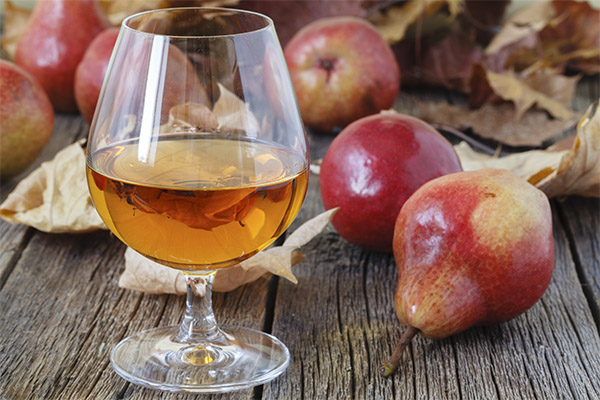
Home wine from pears combines a refined taste with a moderate strength, it is easy to drink and will be met with great interest on the festive table. To make it, you will need:
- sour or sweet and sour pears - 10 kg;
- sugar - 5 kg;
- water - 10 liters.
You can add various ingredients, rowan and lemon juice, apples, vanilla, honey. The cooking scheme will be the same.
For the preparation it is better to have a special container - a fermenter. For such a ratio of products you will need a bottle of 20 liters. It is necessary to take clean filtered water, but not boiled, mix it with sugar and pour it into the container. Cut pears into slices and put them into the syrup. Stir everything again. The classic indicator of fermentation is an ordinary medical glove with a pierced finger. It is put on the neck of the container, so it is better to use large bottles.
The most important are the external conditions. In order not to spoil the mass, you should keep the temperature between 19 and 24 degrees. The fermentation process will go from a month or more. Once everything subsides, the glove will deflate. So, you can filter the liquid into wine bottles for long-term storage. Young pear wine can be consumed immediately, but connoisseurs advise to age another 2-3 months in the cellar.
Cider
A mild, very flavorful low-alcohol drink can be made from pears right at home. It will take time for natural fermentation, but all operations are elementary. Only basic products are needed:
- pears - 8 kg;
- sugar - 1,3 kg;
- raisins - 50 grams.
You can experiment with the recipe, add different spices and ingredients.
It is better to choose sour or sour-sweet varieties of pears with a soft fruit structure. Remove the seeds and stalks, cut in quarters under a meat grinder or blender to make a smooth pulp.
Add sugar to the mixture and mix thoroughly until smooth. Now you can transfer to bottles or jars, there add a handful of raisins and pear puree with sugar. The composition will ferment, so you need to leave at least a third of the container empty.
Cover the jars or bottles with gauze, folded in 4-5 rows. It is necessary to wait for fermentation. You should filter the liquid into other jars or bottles. All the pulp to collect in a gauze bag and squeeze thoroughly to the last drop. Next, work only with the liquid - the future cider. Put the container in a dark and cool place, for example, in the cellar, and leave to infuse for up to a month and a half.
When all the processes in the liquid is over, you need to filter the sedimentary fractions once again, and pour everything into bottles. Fragrant pear cider is ready.
Jelly
This delicious and rich pear jam is a great way to make it for the winter. It is a versatile dessert, it can be flavored with pancakes, spread on a bun or used as a filling in baking. To prepare a traditional pear jam will require:
- pears of a suitable variety - 2 kg;
- sugar - 1 kg;
- lemon;
- a glass of water.
Cut pears into thirds or quarters, removing the core. If you plan to use a blender or meat grinder to grind, it is better to remove the skin, if you choose the method of grinding through a sieve, you can not remove it.
Transfer the chopped fruit to a saucepan, pour water and turn on the heat. You need to cook until the fruit becomes soft. Then take it out and grind it into a puree. You can use a blender, mixer, meat grinder or grind through an iron sieve. Continue to simmer the pears for about another hour, until the mass is reduced by half. Add the citric acid and sugar, stir and simmer for another half hour. After pouring into sterilized jars or serve cold.
Salad
The pear is a part of many both simple and refined salads. And the fruit can be used roasted or baked. However, the Italian salad with arugula, pears and walnuts is the most interesting, healthy and easy to prepare. You will need:
- three fairly juicy pears;
- walnuts - 180 gr;
- Parmesano cheese or Dor Blue - 100 gr;
- fresh arugula - 100 gr;
- One teaspoon of French mustard;
- two teaspoons honey;
- juice of a third of a lemon;
- three tablespoons of olive oil.
You can add roasted seeds, basil, spinach, allspice. Initially, the arugula should be washed, dried and torn into small pieces.
Pears cut into portions, and it is better not to remove the skin. Part of the walnuts just split into large pieces, about a third of them crushed.
Make the dressing in a separate bowl, add mustard, honey, oil and squeeze the juice of a third of a lemon. Mix everything until homogeneous, you can try and add any spices.
Assemble the salad in a bowl, lay the arugula leaves on the bottom, then the pear and grated nuts. Pour in the dressing and stir gently. Sprinkle large chunks of nuts on top and serve.
Smoothie
Making a smoothie out of pears is extremely easy, just chop it in a blender. It will be delicious even for children. However, the real elixir of health and benefits is prepared with yogurt and nuts. For this, you will need the following products:
- one medium pear;
- 20 grams of walnuts;
- A tablespoon of honey;
- 250 ml of white yogurt.
Useful base, i.e. yogurt, can be replaced by kefir or sour milk. Nuts should be crushed in a blender, coffee grinder or mortar. Now pour the yogurt into the blender and add a pear without peel, cutting it into pieces. Whisk in a few strokes, pour the nuts and honey, and whip until the desired smoothie consistency. You can pour it into glasses or cocktail flutes and add a mint leaf. This is a great morning smoothie to start a good day.
Puree pears for winter
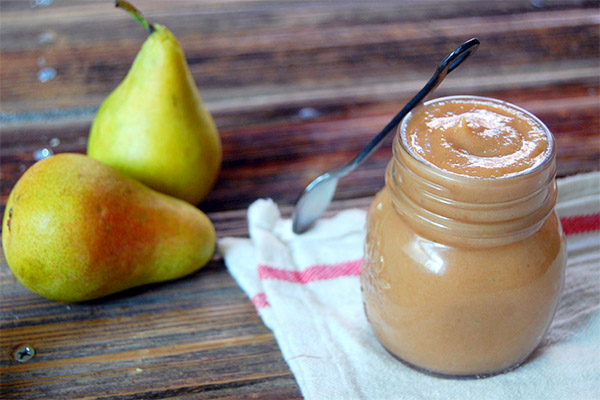
Delicious, flavorful and delicate pear puree can be made for the entire winter. It will be a great dessert, they can be flavored with a loaf or used as a filling for pancakes. The preparation will require:
- 7 medium pears;
- 50 ml water or apple juice;
- half a lemon;
- One cup of sugar;
- A little vanilla.
For long-term storage, heat treatment is mandatory, so the pears should be cut without peel into suitable pieces for a blender and sent to a saucepan. There pour the juice of half a lemon, so that the fruit does not darken, as well as water or apple juice. Warm all this and cook on low heat for 20 minutes.
Before shredding, the pears must cool, then you just need to put them in a blender and bring them to a homogeneous puree. Then you need to return the mass to the saucepan, add sugar and vanillin, and cook until the desired consistency is reached, stirring regularly.
For storage, the mass should be put only in sterilized jars with airtight lids. Store in a cool, dark place for up to 8 months.
Pear tarte tatin
A pear can make a wonderful tart to occupy a place of honor on the holiday table. Today it's really easy to make, because you can get a good frozen puff pastry (400g). All that remains is to prepare the filling, namely:
- six pears;
- one lemon;
- walnuts - 100 gr;
- butter - 50 gr;
- sugar - 100 grams.
Vanilla and cinnamon go great with tarte tatin, you can use some dried fruit and a few slices of sweet apple.
Peel and core the pears. Cut into slices, but you can use a large cube. Peel off the zest of a whole lemon, then cut off a third and squeeze the juice over the shredded pears, this will keep their light and natural color.
In a saucepan pour the sugar, melt it and cook the caramel. Then add the butter, zest and acidify with the juice of the remaining lemon. After stirring, add chopped pears and cook for 5-7 minutes.
Using a skimmer, take out slices or large cubes of fruit and place them in a baking dish, pre-greased with butter. Boil the caramel for another 5 minutes, then pour over the pears. Sprinkle grated walnuts, cinnamon and vanilla on top. Then cover with the puff pastry, turning the edges inside, make a rim and send to bake for half an hour at 180 degrees.
Turn the tarte tatin before serving, you can do it directly with the help of a tray, holding the cake with a plate.
Confit
Extremely useful and delicious confit of pears can be made even at home. It is acceptable to add different ingredients, such as coffee beans or caramel. The taste can seriously vary from one type of recipe to another. Among others, a super healthy pear with ginger should be highlighted, for which you will need the following products:
- sweet pear - 1.5 kg;
- sugar, you can brown sugar - 800 grams;
- fresh ginger root - 30 g;
- half a lemon.
The pear should be washed and diced. To prevent it from darkening, sprinkle everything with lemon juice, only a few drops are enough.
Now you should cook caramel, put the sugar in a saucepan, add the rest of the lemon juice and pour 150 ml of water. Cook the caramel on medium heat until it is completely cooked. Add finely grated ginger and then diced pears. Stir everything without removing it from the fire. The fruit will juice very quickly and even seem excessively watery, but by the end of an hour of cooking, the consistency will come back to normal.
Pour hot confit into sterilized jars and immediately close hermetically. Serve the dish cold to the table.
How to bake
Pears are quite simple to bake, it is enough to put the fruit in a heated to 180-200 degrees oven. The average cooking time is 20 minutes, but it can be varied, baking longer for softness. It is best to prepare a delicious and healthy dessert:
- Of one large pear;
- one spoonful of walnuts;
- two tablespoons of honey;
- a pinch of ground cinnamon;
- A teaspoon of lemon juice.
Cut the pear in half, scrape out the core with a teaspoon to make a neat cavity. The stiff stalk can be cut off with a knife.
Place walnuts in the recess, pour honey over the whole pear and sprinkle with cinnamon. Grease a tray with a little oil and put the fruit. Bake in the oven on high heat (180-200 degrees). Take out after 15 minutes, pour lemon juice and remaining honey. Send to bake for another 5 minutes. You can determine the readiness with a toothpick.
Serve hot. On a restaurant level, bake with a cinnamon stick. A scoop of ice cream or heavy sour cream will go well with the pear.
How to eat a pear properly
Pears can be eaten in any form and without any special restrictions. The only complication for digestion are special cells with a dense structure, they even feel in the mouth as some kind of stony formations. Therefore, it is not recommended to eat pear immediately after a heavy and tough food. It is better to wait for 2-3 hours, so it will not overload the digestive system, and on the contrary, it will continue to stimulate.
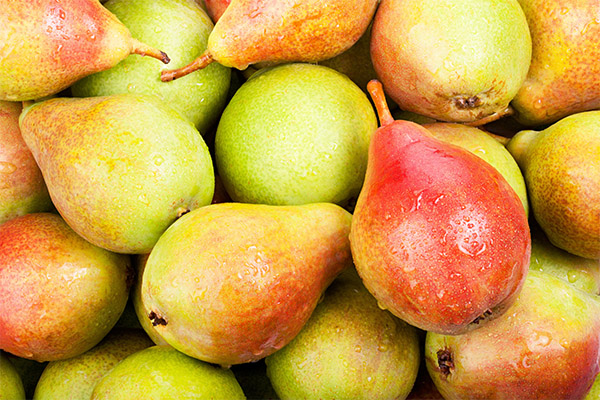
You can use baked pear in the recovery period after surgery or injury, even during the most stringent diets. It makes no difference whether it is eaten on an empty stomach or together with other foods.
How much you can eat per day
The recommended rate for an adult is 1-2 pears per day or a comparable amount of juice, compote, processed foods. You can eat more, but the usefulness will decrease as you saturate with vitamins and minerals.
Children from 8-10 months is better to start with a boiled or baked puree in the amount of 30-50 grams. With a year and a half can be given up to 1 pear throughout the day. This will be most useful.
Can pears be eaten at bedtime and on an empty stomach?
It is not recommended to eat hard varieties of pears, they have too hard fibers, which will seriously irritate the intestines and lead to discomfort.
Eating a pear on an empty stomach and at bedtime is a condition of certain diets, which will really get rid of congestion and help you lose weight.
Nutritionists recommend eating one pear in the morning on an empty stomach, especially after an evening meal with heavy food. This will get rid of the feeling of heaviness, heartburn and set the digestive system for the new day.
Can I Give Pears to Animals
Including a small fruit plate in the weekly diet of cats and dogs is highly recommended, it will help in digestion and saturation of the body with necessary substances. The fruit should be cut open and the core removed. A normal diet is 1-2 pears per week, no more is necessary.
Hamsters and other small animals can also eat a pear, but it is better not to indulge their desires. An important point: the average hamster can eat a whole fruit in a day. However, this will lead to serious digestive problems, and even death is possible. Therefore, you should not leave the animal with a pear unattended. It is optimal to give small portions at the rate of a quarter of a pear per week.
Parrots also like this treat, especially bones. You shouldn't give them too much, but it's definitely worth introducing them into the diet.
Interesting facts about pears
- Before the advent of tobacco in Europe, it was the pear leaves that were smoked. They were dried, crushed, and smoked.
- The pear has been valued not only for its fruit, but also for its wood, which is extremely strong and textured. It was used to make musical instruments, sophisticated scientific instruments, precision rulers and royal furniture.
- The pear was first cultivated in ancient China around 1100 BC. The fruit came to Europe very early, but they didn't start creating orchards until the 200s B.C. America didn't know pears at all until 1620, but once the tree got there, it took root and became the ancestor of more than 500 American varieties.
- The ancient Greeks sacrificed the pear to the goddesses Hera and Aphrodite, and in Rome to Juno and Venus. Homer, in his work The Odyssey, referred to its fruit as gifts from the gods.
«It is important: All information on this site is provided for informational purposes only. for informational purposes only. Before applying any recommendations, consult a health care professional. specialist. Neither the editors nor the authors shall be liable for any possible harm caused by materials."

